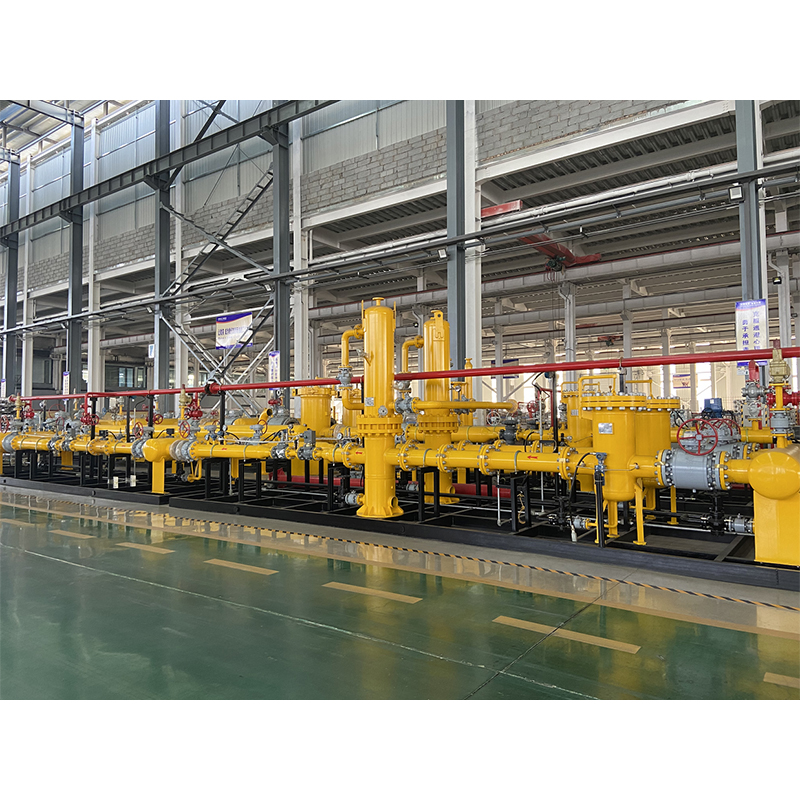
Dec . 04, 2024 21:10
Back to list
gas pressure regulator valve
Understanding Gas Pressure Regulator Valves A Comprehensive Overview
Gas pressure regulator valves are essential components in various applications, playing a critical role in ensuring that gases are delivered at the appropriate pressure for safe and efficient use. These devices are widely used in residential, commercial, and industrial settings, where they manage the flow of gases such as natural gas, propane, and other industrial gases. Understanding how these regulators work, their components, and their importance can help users appreciate their value in gas distribution systems.
At its core, a gas pressure regulator valve is designed to reduce the high inlet pressure of a gas to a lower, regulated outlet pressure. This function is vital because many gas appliances, such as heaters, stoves, and industrial burners, require specific operating pressures to function effectively and safely. The regulator valve maintains a consistent outlet pressure regardless of fluctuations in inlet pressure or variations in gas demand from the system.
Components and Functionality
A typical gas pressure regulator consists of several key components the body, diaphragm, spring, and inlet/outlet ports. The body houses the internal mechanisms, while the diaphragm acts as a sensitive pressure-sensing element. The spring provides the necessary force to adjust the diaphragm’s position, thus controlling the flow of gas.
When gas enters the regulator, it pushes against the diaphragm. If the inlet pressure exceeds the setpoint of the regulator, the diaphragm moves against the spring, opening the outlet port and allowing gas to flow. As the downstream pressure rises and reaches the desired level, the diaphragm moves back, restricting the flow. This constant adjustment ensures that the outlet pressure remains stable, even as demand changes.
Types of Gas Pressure Regulators
gas pressure regulator valve

Gas pressure regulators come in various types, including single-stage and two-stage regulators. Single-stage regulators reduce high pressure to a lower outlet pressure in one step, making them suitable for applications with relatively constant pressure requirements. In contrast, two-stage regulators provide a more precise pressure regulation by reducing the pressure in two distinct stages. This design minimizes pressure fluctuations and is often used in applications requiring high reliability and stability, such as in laboratory settings or critical industrial processes.
Applications and Importance
The applications for gas pressure regulators are diverse. In residential settings, they are commonly found in natural gas supply lines, ensuring that gas appliances receive a steady supply of gas at safe pressure levels. In industrial environments, regulators are critical for managing gas supply for processes such as welding, heating, and chemical production. In addition, regulators play a key role in gas distribution networks, where they ensure safe delivery of gas to consumers while maintaining system integrity and performance.
Safety is a paramount concern regarding gas pressure regulators. Improper pressure regulation can lead to appliance malfunction, gas leaks, or even explosions. Therefore, it is essential to select the appropriate regulator for a specific application and to ensure that it is properly installed and maintained. Regular testing and inspections can help identify any potential issues before they escalate into serious problems.
Conclusion
In conclusion, gas pressure regulator valves are vital devices that ensure the safe and efficient use of gases in various applications. Their ability to control and stabilize gas pressure is essential for the optimal functioning of gas appliances and systems. By understanding the components, types, and importance of these regulators, users can make informed decisions regarding their gas supply needs, prioritize safety, and ensure reliable performance in their systems. Whether in a home, industry, or laboratory, gas pressure regulators remain indispensable in modern society's gas management systems.
Latest news
-
Safety Valve Spring-Loaded Design Overpressure ProtectionNewsJul.25,2025
-
Precision Voltage Regulator AC5 Accuracy Grade PerformanceNewsJul.25,2025
-
Natural Gas Pressure Regulating Skid Industrial Pipeline ApplicationsNewsJul.25,2025
-
Natural Gas Filter Stainless Steel Mesh Element DesignNewsJul.25,2025
-
Gas Pressure Regulator Valve Direct-Acting Spring-Loaded DesignNewsJul.25,2025
-
Decompression Equipment Multi-Stage Heat Exchange System DesignNewsJul.25,2025

